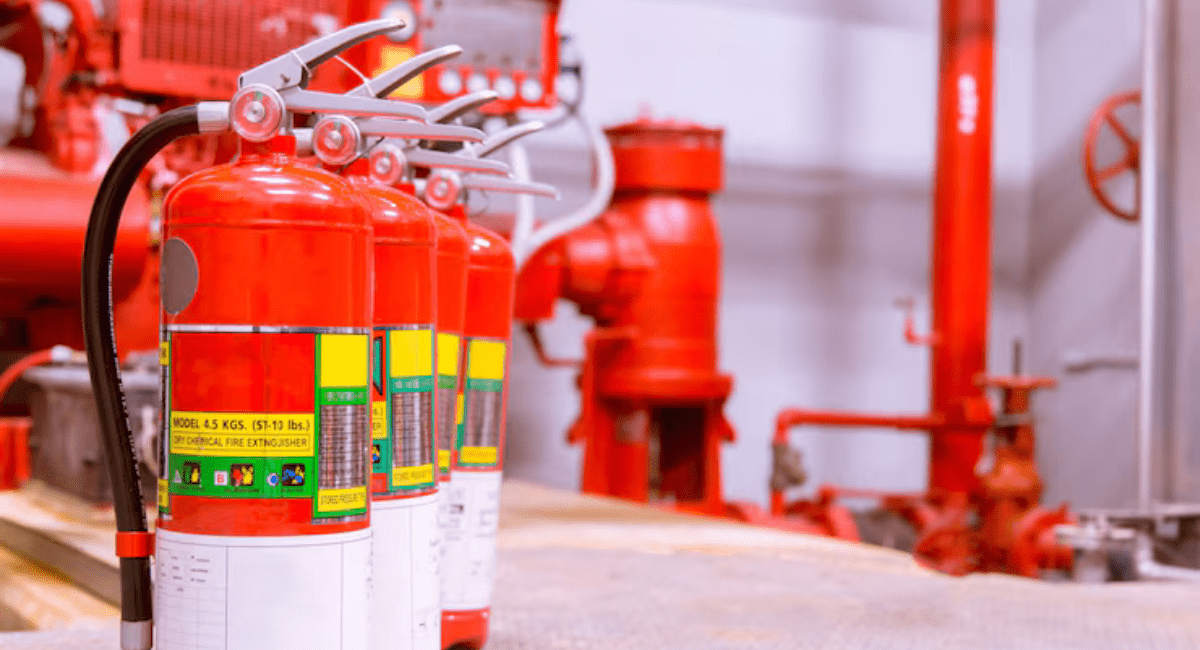Fire safety is a non-negotiable aspect of modern building management, whether you’re overseeing a retail store, a high-rise complex, or an industrial facility. Most fires begin small but can escalate rapidly, causing significant damage if not detected in time. Enter fire supervisory systems, critical yet often overlooked components of fire safety planning.
This comprehensive guide will cover everything you need to know about fire supervisory systems, from their importance and components to types, installation, maintenance, and compliance with regulations.
What Are Fire Supervisory Systems?
A fire supervisory system is a network of devices and controls working together to monitor, detect, and manage fire-related incidents within a building. Unlike standalone fire alarms, these systems provide an enhanced level of safety by ensuring the proper functioning of all fire safety measures, such as sprinklers, emergency lighting, and HVAC systems, during emergencies.
These systems don’t just alert occupants to fire hazards but actively oversee equipment functionality, ensuring proactive rather than reactive fire safety measures.
Why Are Fire Supervisory Systems Important?
Every business should invest in fire supervisory systems for these key reasons:
- Early Detection: They identify faults in fire safety equipment before these escalate into critical issues.
- Dedicated Coordination: Fire supervisory systems ensure all fire safety devices operate in sync during emergencies.
- Code Compliance: Most building codes require the installation of fire supervisory systems to meet safety regulations, ensuring both legal and operational accountability.
- Peace of Mind: A robust system provides assurance that your property and its occupants are as safe as possible, reducing stress and safeguarding business continuity.
Components of Fire Supervisory Systems
The effectiveness of fire supervisory systems lies in their well-integrated components. Here’s what they typically include:
1. Fire Alarm Control Panel (FACP)
This is the central hub, responsible for analyzing signals from connected devices and triggering appropriate responses.
2. Smoke and Heat Detectors
These devices detect fire hazards, such as smoke or abnormal temperature rises, providing crucial early warnings.
3. Sprinkler Systems with Supervisory Switches
Sprinklers activate during fires to suppress flames, while supervisory switches monitor water flow and sprinkler operational status.
4. Emergency Lighting
Guides occupants safely out of the building with illuminated pathways.
5. Annunciators
Provide real-time updates on triggered zones, offering quick information to emergency responders.
Types of Fire Supervisory Systems
Fire supervisory systems come in multiple configurations to suit the specific needs of different facilities:
Conventional Systems
These divide a building into zones to detect incidents within specific areas. While cost-effective, they may offer limited data on the specific point of concern.
Addressable Systems
Unlike conventional systems, these assign unique addresses to each device, enabling precise identification of the location where a signal is triggered.
Wireless Systems
Ideal for historic or renovated buildings where running wiring is costly or impractical, these systems offer flexibility with comparable efficiency.
Compliance with Fire Safety Regulations
Adhering to fire safety regulations is not just a legal requirement but a moral obligation. Key standards you need to know include:
- NFPA 72: A widely adopted standard in the U.S. that establishes criteria for designing, installing, and maintaining fire alarm systems.
- Local Regulations: Always consult local fire safety codes for region-specific requirements.
These regulations are in place to ensure your building’s fire safety measures remain operational and effective.
Installation and Maintenance Made Simple
Implementing a fire supervisory system isn’t as simple as buying the equipment and plugging it in. The following steps can help ensure success:
Installing Your System
- Conduct a fire risk assessment to determine your building’s specific safety needs.
- Partner with certified professionals to design and install your system with full regulatory compliance.
- Test the system rigorously during installation and keep a log for future reference.
Maintaining Your System
- Perform regular monthly inspections to ensure all components function as intended.
- Replace outdated, damaged, or malfunctioning devices as needed.
- Keep documentation from every inspection to showcase compliance during audits.
Benefits of Integrating Fire Supervisory Systems
What’s to gain from investing in such a robust system? Here are the standout advantages:
- Faster Evacuation: Fire hazards are detected more quickly, ensuring timely action and safe evacuation of occupants.
- Cost Savings: Early detection minimizes damage, vastly reducing post-incident expenses.
- Customizable Functionality: Systems can be tailored to match the unique safety needs of any property, offering flexibility and reliability.
Case Studies: Success Stories in Fire Safety
Retail Chain Flagship Store
An addressable fire supervisory system identified an electrical issue in a massive store before it escalated into a fire, saving the company millions in potential damages.
Historic High-Rise Residential Complex
A wireless supervisory system was installed to preserve the building’s architectural features while providing state-of-the-art fire protection.
A Look at the Future of Fire Supervisory Systems
The integration of Artificial Intelligence (AI) and the Internet of Things (IoT) is revolutionizing fire prevention. Through predictive analytics, these advanced systems can analyze historical data to identify potential risks, effectively stopping incidents before they occur. Smart sensors and IoT-enabled systems ensure seamless monitoring and rapid response, setting a new standard in fire safety.
Building Safer Spaces with Reliable Systems
Fire supervisory systems aren’t just tools; they’re lifesaving investments. By ensuring early detection, system coordination, and regulatory compliance, these systems protect both lives and assets. Whether it’s a small retail shop or an expansive high-rise tower, fire supervisory systems are essential for creating a safer future.
Explore the latest technological advancements and make fire prevention a top priority for your facilities today. A trusted fire supervisory system may just be the defining factor between minor disruption and catastrophic loss.

